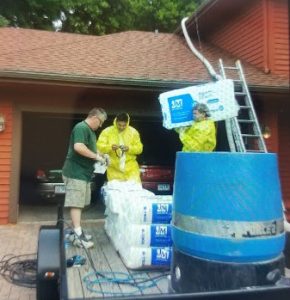Dealing with a wildlife infestation in your home can be a stressful experience, but the challenges don’t end when the critters are removed. It’s equally important to thoroughly sanitize your home to ensure the health and safety of your family. In this blog post, Minnesota Wild Animal Management provides essential guidance on how homeowners can effectively sanitize their spaces after an infestation.
1. Identify Affected Areas
Before diving into the sanitization process, identify the areas that were impacted by the infestation. This may include attics, crawlspaces, walls, and even living spaces. Knowing the extent of the damage helps you focus your efforts.
2. Use Protective Gear
Safety first! Wear appropriate protective gear, including gloves, a mask, and eye protection when handling contaminated areas. This will help prevent the spread of contaminants and protect you from potential health risks.
3. Remove Contaminated Materials
Dispose of any materials that cannot be salvaged or properly cleaned. This may include insulation, damaged walls, or personal items that cannot be sanitized.
4. Vacuum and Clean Thoroughly
Start by vacuuming affected areas with a vacuum cleaner equipped with a HEPA filter. Vacuuming helps remove droppings, hair, and nesting materials. Afterward, clean surfaces with a disinfectant or a mixture of bleach and water (1 part bleach to 10 parts water).
5. Replace Insulation
If your insulation was damaged or soiled, it’s essential to replace it to maintain proper temperature control and energy efficiency in your home.
6. Repair Structural Damage
Address any structural damage caused by the infestation. This may include repairing chewed wires, holes in walls, or damaged vents.
7. Seal Entry Points
Prevent future infestations by sealing any entry points the animals used to gain access to your home. Ensure that vents, chimneys, and openings around pipes are properly sealed and secured.
8. Consider Professional Help
For severe infestations or if you’re unsure about the extent of contamination, it’s advisable to seek professional assistance. Wildlife removal experts can conduct thorough inspections and provide specialized sanitization services.
9. Air Out Your Home
After cleaning and disinfecting, allow fresh air to circulate through your home by opening windows and using fans. This helps remove any lingering odors and ensures proper ventilation.
10. Preventative Measures
Implement preventative measures to minimize the risk of future infestations. This may include regular inspections, proper storage of food, and keeping your property clean and well-maintained.
11. Monitor for Recurrence
Keep an eye on your property for any signs of recurrence, such as strange noises or droppings. Early detection can prevent a minor issue from becoming a major infestation.
Sanitizing your home after a wildlife infestation is a crucial step in restoring comfort and safety to your living space. By following these steps and being thorough in your approach, you can ensure that your home is free from contaminants and that you’re prepared to prevent future infestations. Remember that professional help is always available when dealing with challenging or extensive infestations. Minnesota Wild Animal Management is here to assist you every step of the way, ensuring that your home remains a haven for your family and not unwelcome guests.
The post Sanitizing Your Home After An Animal Infestation first appeared on Minnesota Wild Animal Management.

